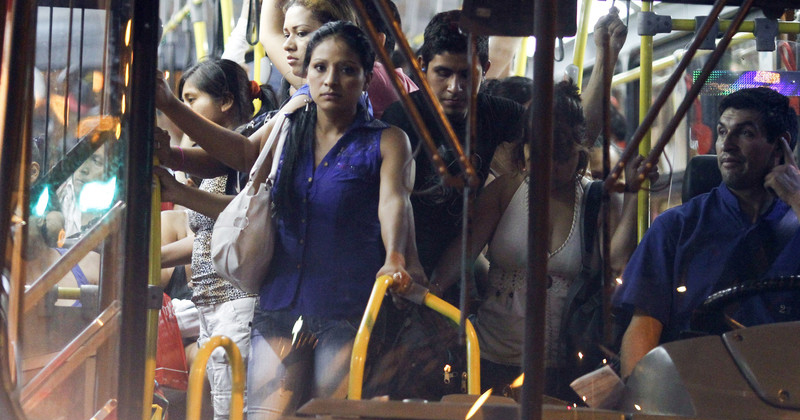 21 September 2019
21 September 2019
7:35am
Saturday
Dearest you,
I think it’s official. I’m allergic to water. Me, who has zero allergies. Me, who takes pride in her ridiculously good immune system. Me, who drinks water from the taps in India and doesn’t get diarrhoea. Now, my body swells up when I touch the water. I wash my hands and they start to itch like mad; feeling like they’re one huge mosquito bite each. I take a shower, and my entire body turns red along with the itching.
Unlike hives, there are no bumps, just redness. It’s not due to the source of water either because this happened with the river in the jungle and with the tap water in the city. At least for some reason, when it’s my whole being that itches, I can refrain from scratching. All this is happening while the bites from Madidi National Park have not yet completely died down. I am The Itchy & Scratchy Show right now. And it’s really freaking uncomfortable.
Or maybe this is how the universe is protecting me from the current bathroom situation. I had to get myself a room in the city because of some visa stuff that needed sorting out. I decided on this hostel because I get my own private (super unfancy) room for RM25 (approximately USD6) and was told there’s a hot shower.
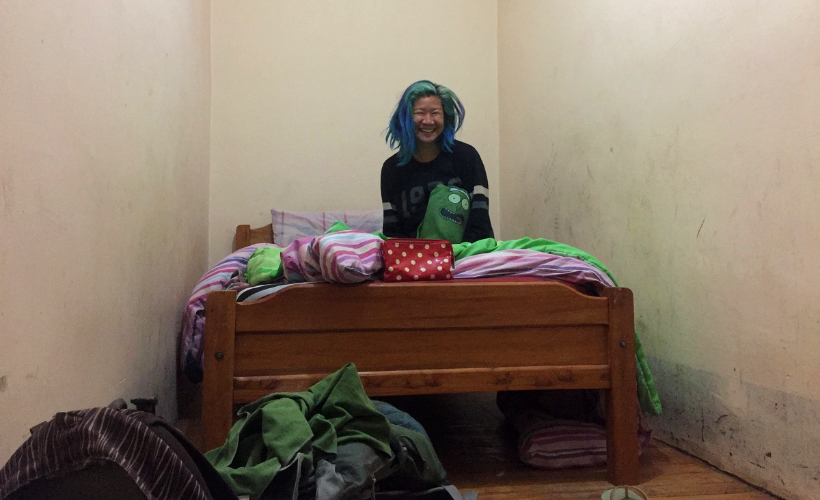
I went to the bathroom and saw the dodgiest water heater in the world. I don’t know who their DIY person is, or where they learnt this technique from, or why they figured this would work, or how no one has complained about this yet. The wires were all messily cut up, reattached by hand, and left bare out in the open. Someone’s definitely going to get electrocuted at some point. Much to my disappointment, the heater didn’t work anyway, and I had to shower with cold water despite outside temperatures being in the single digits. All things considered, I’d rather be dirty, thanks.
My bites are looking terrible though. I’m scratching until they’re open, sore, and scabby. The horseflies at Madidi were brutal. Not only do they bite until you bleed, but they also like to bite on top of other bites. Double attack on the ones we got from some other type of red sandfly. Do you know why they’re called horseflies? Because they actually feed on horses and drive them crazy. Working on a jungle farm meant I was in the plantations a lot. On the ground, planting new trees, covered in dirt, attracting all the bugs to my sweat. Adding to the aggravation was all the buzzing. The horseflies were constantly bzzz bzzz bzzz-ing in my ears, while the sandflies enjoyed flying a millimetre away from my eyeballs. They had to be in cahoots in driving us mad. I was frequently swatting my own face in anger. Cursing and swearing at them to go away. As though they could understand. As though they would care even if they could. Pests.
Our boss, who’s immune to them now said, “You should just let them bite you. It’s the least we can do since we’re barging into their ecosystem.” Nope. No can do, Sir. My empathy does not extend to insects. I hate them so much. When I smack a horsefly and it’s not yet dead, I pluck out its wing and a few legs and leave it on the ground to die a slow death.
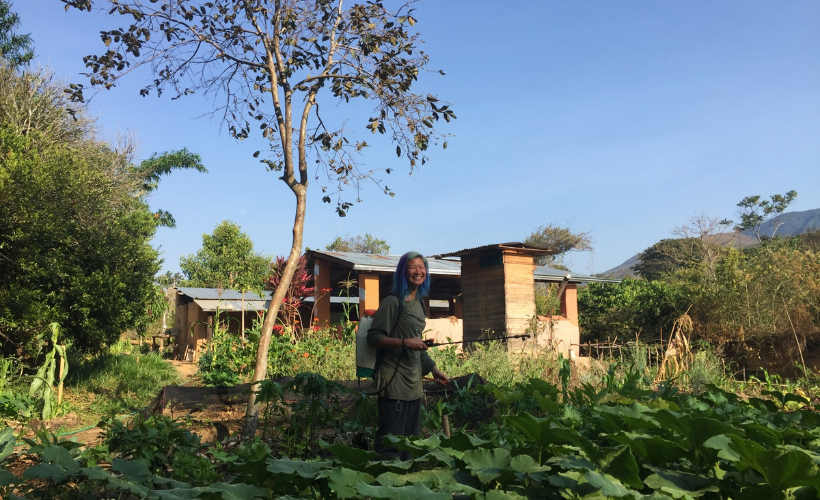
Remember the nagging old man I found to be irritating? On my last day there, he was passive-aggressively stating how we volunteers were using up all the aloe vera plants to nurse our bites. Dude, there’s a tonne of plants left. I feel like our job is mainly to reassure him that we’re not going to tear this place to ruins with our inexperienced, young, dumb hands. But also, yes, everyone’s skin was simply covered in red blotches; some girls swelled up so badly until you couldn’t see their ankles. They became cankles (calf and ankle – I learnt this from Family Guy). You couldn’t hold it against us to pluck off a few aloe vera stems. We felt no peace with the bites.
Everyone who officially lived here was completely unaffected though. All their limbs looked perfectly smooth and you never see the kids itching away. I wonder how long I’ll have to stay here before my body builds up an immunity. Another thing that amazed me about the kids was that they were fantastic eaters. They were not fussy at all, and claimed every meal to be muy rico! Even when the food tasted exceptionally bland to me, they still find it to be delicious. I guess when they’ve never been exposed to burgers and fries, and especially MSG, their every meal is simply the best one. On the daily, I regretted not buying some chillies from La Paz and bringing them over. Nevertheless, lunch was my favourite time of the day because it signified that work was over! And now we get to eat. The blandness was simply because I’m Asian and I love my spices. Meanwhile, at this place, for ayurvedic and Hare Krishna reasons, they cook without condiments and with minimal salt. No garlic even.
If you’re always on the road, travel stress-free by making your diet go green:
Benefits Of Backpacking As A Vegetarian
Although, it’s cool that many of the ingredients come from their garden. They grow a whole lot of trees, vegetables, fruits, roots, everything. Often with the help of a lot of fertiliser made mainly out of the compost. This compost consists of human poop and urine, cow poop, and other natural wastes that aren’t as gross, like rotting vegetables. You can bet even the normal flies were extra attracted to us. During my first couple of days there, everything was smelly to me. When my host was explaining how the compost pile works, and how it generates its own heat in the centre at up 70o Celsius, it was all quite fascinating. Then he asked me to stick my hand in for a lovely warm feel. I felt my hand’s natural reaction was to pull back because, no thanks, I’d really rather not. So that’s the solid fertiliser. There’s also the liquid fertilisers made out of cow manure, ashes, milk, decaying plants, and something else. I almost gagged when the barrel was opened up for me to see and smell this fermentation while learning the ratio for mixing the perfect concoction for the plants.
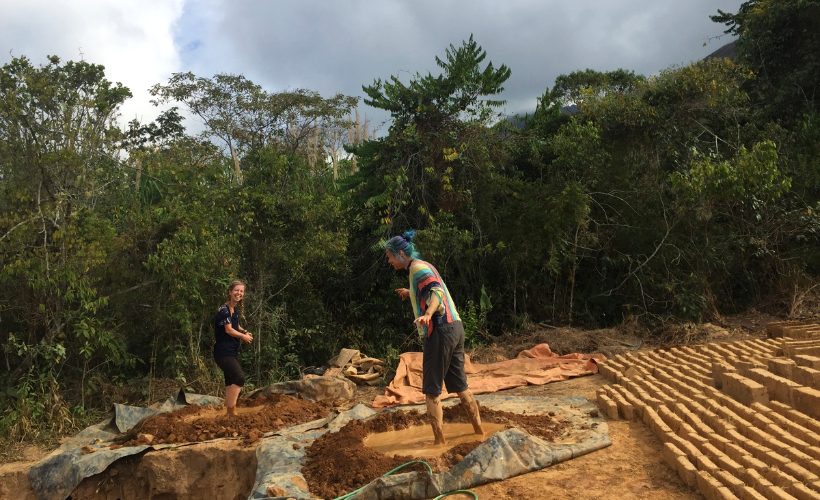
Cut to two weeks later, there I am sticking my hands into everything as I show the new girl how it’s done, and I can see her face slightly scrunch up as she tries not to show she’s disgusted. Funny how quickly you adjust to new surroundings. I initially hated the compost toilet situation too. Although we get toilet seats, it essentially still is a hole in the ground where you throw three cups of soil into the bowl once you’ve done a poo. At some point, this will go towards fertilising the plants which we will then eat. Crazy circle of life. The toilet lid is meant to be closed at all times when not in use. Yet I don’t know why people keep leaving it open, so there’s always a swarm of flies. As the days went by, I felt less dread having to use the loo, but I could never get used to the smell. Thank goodness our host is the only one who handles clearing out that waste.
All of this experience has taught me why 100 per cent of organic produce costs so much more. On top of preparing the healthiest homemade waste, another one of my daily tasks was to check on the tomato plants for beetles that suck out the trees’ sap and cause them to wilt just before fruiting. So it’s understandable that most farmers would use all kinds of pesticides to avoid these situations. Who has the time to be plucking off beetles one by one? At least those don’t bite. But they do release some stinky liquid onto your fingers when you catch them. So gross. Actually, I couldn’t really smell the beetle juice until one day, when the bottle I collect all the beetles in, broke. I was tapping the bottle to make all the bugs drop to the bottom. Tapped too hard. Crackkk. Oh crap. The smell was horrifyingly pungent and goes right up your nose. Now I had to pick up three weeks’ worth of beetles and quickly transfer them into another bottle before they escape. Since then, I could smell these beetles even before capturing them.
Ugh. I have a pounding headache again. Since yesterday! It must be the altitude. I can’t think of any other reason why my head would be hurting for two days in a row, and it’s coincidentally every time I’m in La Paz. If I’m having altitude sickness, then nausea makes sense too. This is so annoying. Anyway, I returned to La Paz for one main reason – get an extension for my visa, and I am so frustrated with how that went.
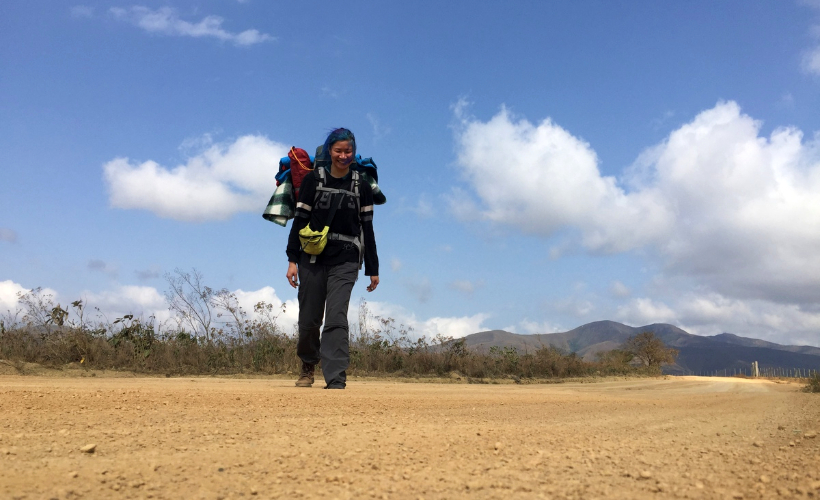
Yesterday, I headed out at 7:30am to the immigration office. Nice and early, and there was already a queue forming. I got my documents ready; which was only one copy of my passport, one copy of my Bolivian visa and stamp, and two passport photos. Now, I’ve read that you can only apply if you have five days or less left on your visa and you can extend for another 30 days for free. First, I was surprised that I didn’t immediately get turned away because I have 10 days left before expiry. I couldn’t apply on a later date because I’d be in the Amazon where there are no immigration offices. This was bad planning on my part. After the woman took down all my details and whatnot, she brought out an invoice. She wanted to charge me over BOB500 (approximately USD72) I asked if this was a new rule. She said it has always been the case. I couldn’t really debate her on this because my only defence was that all the travel blogs said the visa was free. Was this because I applied too early? Was it because of my Malaysian passport? Did I just, unfortunately, get the wrong lady who didn’t know any better? I will never know. I apologised for wasting her time and said I’ll pay the overstaying fee when I leave. I believe it would add up to be cheaper than this. It’d better be!
You know, it only just hit me that there are no chain stores in Bolivia. No food chains like McDonald’s, no convenience chains like 7-Eleven, no coffee chains like Starbucks – at least none that I’ve seen. No wonder I can’t find any information online about anything. Everything I find out is usually from blogs or TripAdvisor. Never an official website of a company. Every store seems to be tiny, family-owned, and connected to the front part of their house. Sometimes this includes public toilets as well. I find it strange that there are public washrooms and showers on pretty much every block. Do people not have showers in their own homes? And do they not have postmen?
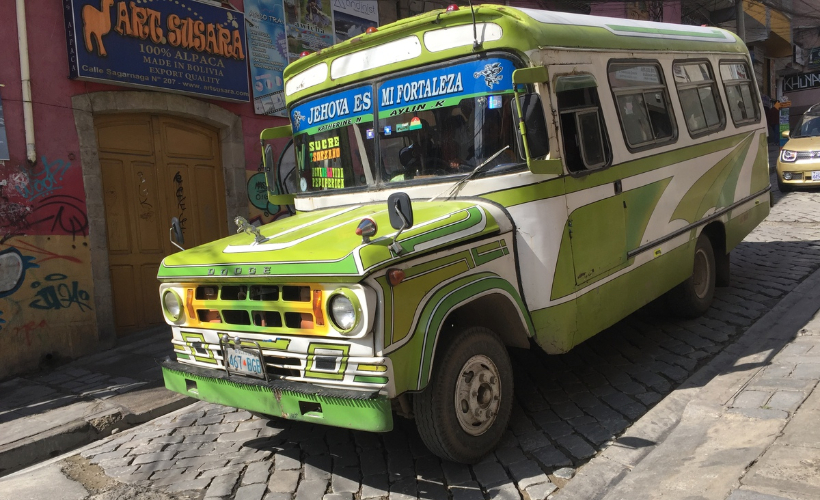
Whenever I get on the buses, more than half of the luggage compartment is filled with boxes and addresses written on them. Along the way, I’d see people run-up to the bus with a parcel in their hand. And they hand that over without getting on. Which makes me guess that the buses also work as a delivery service, and the recipient simply has to head to the bus terminal and wait for their parcel to arrive. How amusingly old school. When I first entered Bolivia, someone said to me, “Only now you finally get to see the real South America!” Suggesting that Chile, Argentina, and Uruguay are too fancy to be counted. Much of the world is simply getting homogenised, eh?
Okay, I’m getting hungry now. I’m going to get some food and try to sort out my transportation for getting to Riberalta that’s all the way north and into Amazonia! Do you know about the Death Road? It’s the route that connects La Paz to the Amazonian jungles and was dubbed the world’s most dangerous road. Cars were plummeting over the edge at an average of one car every two weeks. So you can imagine how much riskier it must be with buses and trucks on this super narrow road along the mountains. But nothing (much) to worry about now. A new road has been built, one with fewer deaths, and I’ll be going down that route instead. Still a little dodgy, but chances are that if it’s the dry season (which it is), you’ll be alright. During the rainy seasons though, better think twice. Or thrice. Then decide you love your time and your life and just take a flight instead. When the roads turn into slush, your journey can get delayed by days or weeks. Not exaggerating.
Bueno. Speak to you next from the land of anacondas, piranhas, and tarantulas!
Besitos,
Petrina
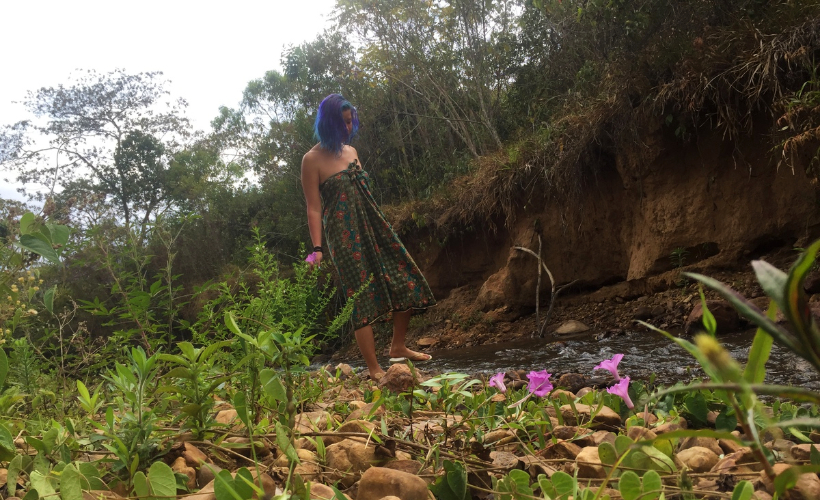
PS: Getting around La Paz itself is actually pretty easy. Even for a forever lost person like me. Your options include:
1. Cable Cars
I think even if you don’t actually need to get anywhere, you’ll still want to ride it just for fun and for the view. It’s only BOB3 (approximately USD0.40) per route.
2. Micros
These can be colourful minibuses or plain vans, but you can recognise them because their dashboards have signs with names of the areas they’ll be heading to. Once you know where you want to go, just flag one down and hop right in. Only BOB2 (approximately USD0.30).
3. Taxis
Naturally, this is the easiest and most convenient option. Just make sure you find out the price first before hopping in as they don’t run by meter. I read that radio taxis are your safest bet, although in general, I haven’t gotten the vibe of being cheated with higher gringa prices. So there’s no need to be paranoid about that either.


